CMEPS-J Report No. 69 (January 22, 2023)
Hiroyuki AOYAMA
Kota SUECHIKA
Shingo HAMANAKA
Yutaka TAKAOKA
Dai YAMAO
Aiko NISHIKIDA
Kohei IMAI
Masaki MIZOBUCHI

I. Purpose
The purpose of Middle East Public Opinion Survey (Syria 2022) is 1) to understand what Syrian people expect from Syrian NGOs within the framework of efforts for the implementation of the “National Development Program for Post-war Syria (البرنامج الوطني التنموي لسورية فيما بعد الحرب),” especially in relation to microfinance, and 2) to evaluate how foreign countries, including Japan, can support the activities of the NGOs that meet the needs of the Syrian people in collaboration with the Syrian government and institutions.
II. Cooperative Organizations and Collaborative Research Projects
While conducting the survey, we were supported by the Syrian Opinion Center for Polls & Studies (SOCPS, مركز الرأي السوري للاستطلاع والدراسات, Director Rizq Elias) to finalize the contents of the questionnaire, sampling, interviewing poll subjects, and inputting data.
Coordination with SOCPS was established en bloc by Hiroyuki AOYAMA (professor at the Tokyo University of Foreign Studies), who is the principal investigator in the project entitled “Roles of Informal Actors in Reconstruction and/or Destruction of the State: Case Studies of the Arab East.”
III. Method of Survey
1. Survey Schedule
First Phase (Preparation): May 1–June 30, 2022
-
- May 1–June 1, 2022: Japanese research team and SOCPS prepare and modify questionnaires.
- June 4 –5, 2022: SOCPS trains survey staff to conduct a pre-test.
- June 6–10, 2022: SOCPS conducts the first pre-test.
- June 17–21, 2022: SOCPS conducts the second pre-test.
- June 22–23, 2022: SOCPS aggregates the pre-tests.
- June 24–28, 2022: SOCPS verifies the results of the pre-tests and prepares for the revised questionnaire.
- June 29, 2022: The Japanese research team acknowledges the revised questionnaire.
- June 29, 2022: SOCPS trains survey directors to implement the poll survey.
- June 30, 2022: SOCPS trains survey staffs in each governorate.
Second Phase (Main Survey): July 1–September 1, 2022
-
- July 1–September 1, 2022: Eight survey directors and thirty-eight staff members conduct the main survey.
Third Phase (Preparation for the Final Report): September 2–December 10, 2022
-
- September 2–October 1, 2022: SOCPS enters, cleans, encodes, and analyzes data and draws charts.
- October 1–5, 2022: SOCPS validates data entry, cleaning, encoding, analysis, and charts.
- October 6–9, 2022: SOCPS creates SPSS and CSPRO data files.
- October 7–December 10, 2022: SOCPS creates final report.
- December 15–23, 2022: The SOCP prints the final report and prepares it for sending to Japan.
- December 24, 2022: Japanese research team receives the final report.
- December 25, 2022: SOCPS prepares for sending attachments (appendices, sample output list, charts, etc.) and photos.
2. Survey Subjects
A total of 1,694 male and female Syrian nationals, aged 18–70 years and residing in the Syrian Arab Republic, were selected to participate in the survey. Data from 1,500 respondents were used for the analysis, and the remaining 175 who refused to respond were excluded.
Respondents Who Refused to Participated in the Survey by Governorate
| Damascus | 26 |
| Aleppo | 27 |
| Damascus Suburb | 35 |
| Hims | 13 |
| Lattakia | 18 |
| Idlib | 25 |
| Al-Hasakah | 31 |
| Daraa | 19 |
| Total | 194 |
3. Survey Method
-
- Door-to-door individual personal interview in Arabic.
- Number of participating staff: 46 (38 survey staff members and eight directors).
4. Sampling Method
Samples were extracted in the following manner:
(1) The data of the Central Bureau of Statistics, Office of the Prime Minister of Syria in 2014 and 2020 were referred.
(2) The following variables were considered:
-
- Gender (male, female)
- Generation (18–24, 25–35, 36–50, 51–70)
- Current address
- Selected the following eight governorates representing the major geographic divisions of Syria)
- Southern region (comprising Damascus, Rural Damascus, Quneitra, Daraa, and As-Suwayda Governorates): Damascus, Rural Damascus, and Daraa Governorates
- Northern Region (comprising Aleppo and Idlib Governorates): Aleppo and Idlib Governorates
- Central Region (comprising Hims and Hama Governorates): Hims Governorate
- Coastal Region (comprising Latakia and Tartus Governorates): Latakia Governorate
- Eastern Region (comprising Al-Hasakah, Deir ez-Zor, and Raqqa Governorates): Al-Hasakah Governorate
- Of the eight governorates selected, 210 samples (14 clusters) were allocated to each of the Damascus and Rural Damascus Governorates and 180 samples (12 clusters) each to the other six governorates.
- Selected the following eight governorates representing the major geographic divisions of Syria)
- The following cities, towns, villages, and wards were selected as survey sites.
Governoates District Area City/Town/Village/Neighborhood
| Governoates | District | Area | City/Town/Village/Neighborhood |
| Damascus | Al-Adawi, Al-Amarah, Bab As Salam, Bab Touma, Baghdad Street, Baramkeh, Barzeh Prefabricate, Hejaz Railway Station, Mezzeh 86, Mezze Autostrad, Muhajireen, Qaboun, Qassaa, and Rukn al-Din Neighborhoods | ||
| Aleppo | Manbij | Manbij | Manbij (Al Sarab Neighborhood) and Karama |
| Mount Simeon | Mount Simeon | Aleppo (Akramiya, Aleppo Scientific Beautification, Al Aziziyah, Halab Al Jadida, Hamadaniah 1, Jumailiya, Al Khalidiyah, Al Mashhad, Saif Al-Dawla, and Salaheddine Neighborhoods)Scientific Beautification Neighborhoods) | |
| Damascus Suburb | Damascus Suburb | Babilla | Babilla and Subaina |
| Damascus Suburb | Bait Sahm | ||
| Al Kiswa | Al Kiswa | ||
| Qatana | Jdeidet?Artouz | Jdeidet Artouz, Jdeidet al-Balad, and Jdeidet al-Fadl | |
| Beit Jinn | Heeneh | ||
| Qudssaya | Qudssaya | Ain al-Khadra, Ashrafiyat al-Wadi, and Bassemeh | |
| Al Qutayfah | Al Qutayfah | Al Tawani | |
| Al Tal | Saydnaya | Saydnaya | |
| Al-Zabadani | Serghaya | Serghaya | |
| Hims | Hims | Hims | Hims (Al Adawiya Akrama, Armenians, Al Hamidiyah, Karam al-Loz, Karam el-Zeitoun, Al Muhajireen, Al Nazha, Al Sabil, Wadi al Dahab, Al Wurud, and al-Zahra Neighborhoods) |
| Lattakia | Lattakia | Lattakia | Lattakia (Americans, Al Baath Project, Buqa, Al Farous, Al-Jumhuriya, North Al Ramel, Prison, 7th Project, Al Zain Project, Sulaiba, Al Uwainah, and Al Ziraa Neighborhoods) |
| Idlib | Arihah | Ehsim | Al Bara |
| Harem | Al-Dana | Tal Alkarama | |
| Idlib | Abu al-Duhur | Abu al-Duhur, al-Dayer, Hamimat Waridat al-Kua, and West Warida | |
| Maarrat al-Nu’man | Hesh | Alteh | |
| Khan Shaykhun | Hobait and Khan Shaykhun | ||
| Al-Tamanah | East Hamadaniya, Al-Tamanah, and West Hamadaniya | ||
| Al-Hasakah | Al-Hasakah | Al-Hasakah | Al-Hasakah (Airport, Al-Aziziyah, al-Balad, East Ghuwayran, East Nushuwa, Kallasa , Marsho, Omran , Tall Hajar, West Ghuwayran, and West al-Nushuwa Neighborhoods) |
| Al-Malikiyah | Al-Malikiyah | Al-Malikiyah (Tishrin Neighborhood) | |
| Daraa | Daraa | Daraa | Daraa (Airport, al-Dahiya, Al-Kashif, Dam Road, Maysalou, North Railway, Al Qusur, Al Sabil, Al Sahar, al-Sajna, al-Sall, and al-Sihafa Neighborhoods) |
IV. Aggregate Results
1. How much is your satisfaction with the current social and economic situation in Syria?
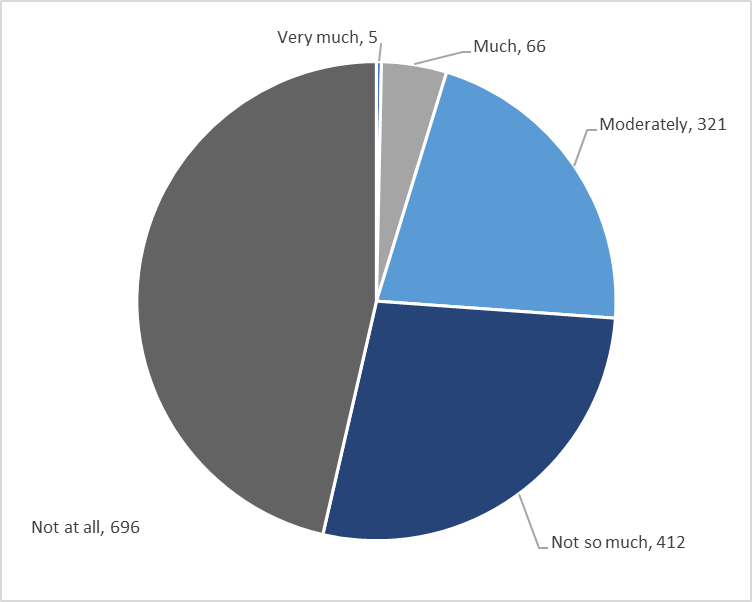
2-1. How much do the following daily necessities cost your household budget?

-
-
- 2-1-12. Others: Two respondents answered “club activities” and “entertainment.”
-
2-2. To what extent do the following reasons affect your daily needs.
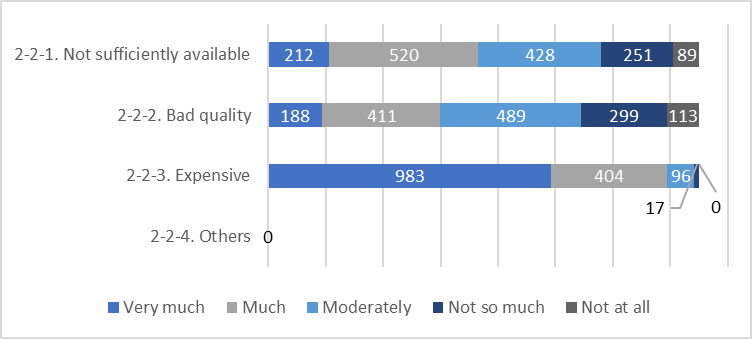
3-1. If you are thinking of changing jobs, to what extents do you want to work in the following industrial sectors?
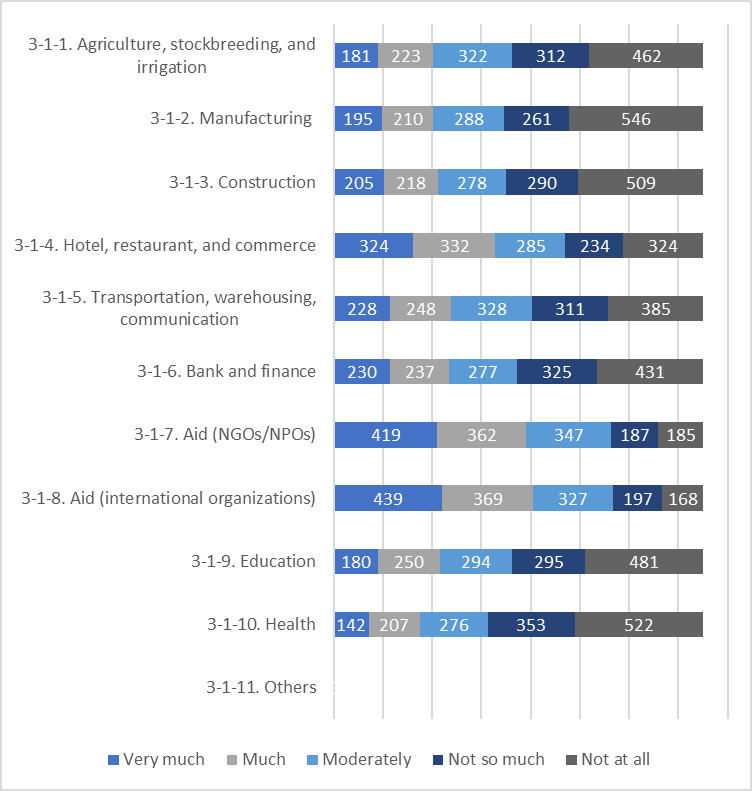
-
- 3-1-11. Others: Six respondents answered “studying,” “law,” “decoration,” “housewife,” “cannot work,” and “none.”
3-2. Please select three reasons as to why you want to work in the above sector (Question 3-1).
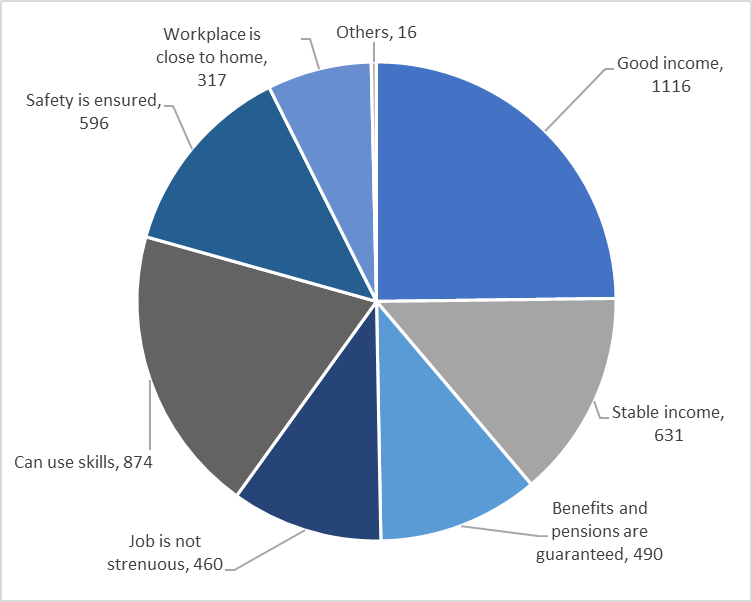
Others
| Using experience | 1 |
| Future planning | 1 |
| Developing work | 1 |
| Learned in childhood | 1 |
| Securing income | 1 |
| Service to citizens | 1 |
| Housewife | 1 |
| Hope | 1 |
| Cannot work | 1 |
| None | 1 |
| Free tuition | 1 |
| Helping people | 1 |
| My main occupation | 1 |
| Hobbies and work | 1 |
| Inherited from ancestors | 1 |
| Inherited from family | 1 |
3-3. How many times have you changed your jobs since the outbreak of the crisis in 2011?

4. Although armed conflict has largely ended in Syria, the situation remains difficult. Please select three issues that Syria should address in this difficult situation.
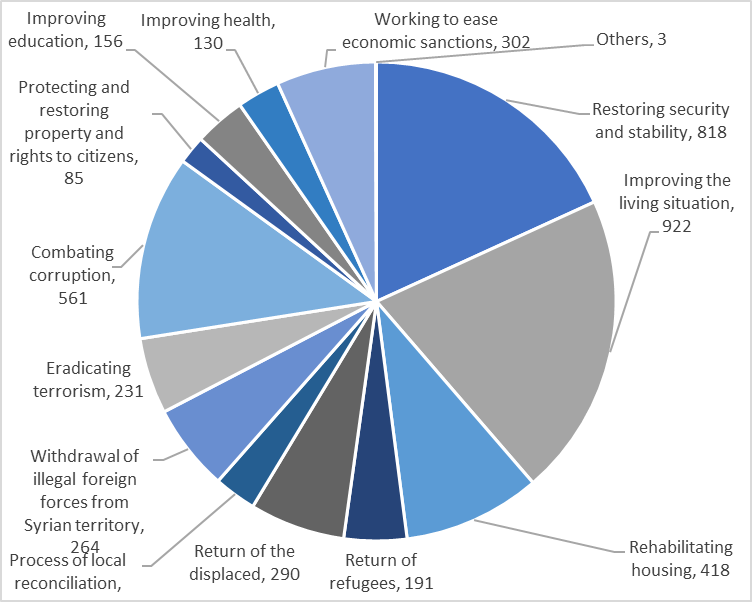
Others
| Psychological aspects | 1 |
| Improving electric situation | 1 |
| Right generation | 1 |
5. Please select the three topics that have had the most (negative) impact on the Syrian economy since the outbreak of the crisis in 2011.
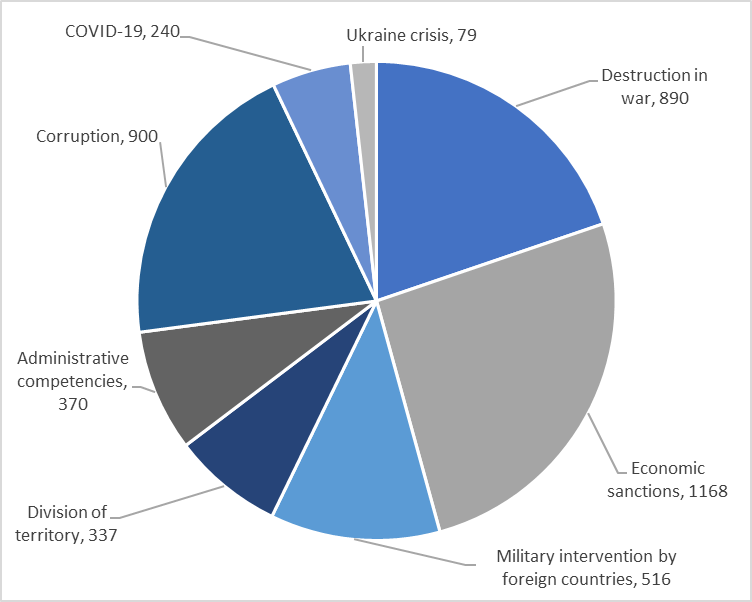
6. Please select three topics for which you think the support and assistance of NGOs/NPOs is effective.

Others
| Health, medicine, treatment, and cleaning | 33 |
| Education | 18 |
| Alternative energy | 3 |
| Support for people with disabilities | 3 |
| Training and support for women | 3 |
| Education and health | 2 |
| Sales | 2 |
| Child care | 2 |
| Vocational training and support for young people | 2 |
| Media | 1 |
| Education and electricity | 1 |
| Services | 1 |
| Law | 1 |
| Hospitals and schools | 1 |
| Hospital and surgery | 1 |
| Living situation | 1 |
| Electricity and water service | 1 |
| Tailor | 1 |
| Orphanage support | 1 |
| Mental support | 1 |
| Small medium enterprise financing | 1 |
| Literacy | 1 |
7-1. To what extent do you (currently) expect the activities of NGOs/NPOs in the following items?
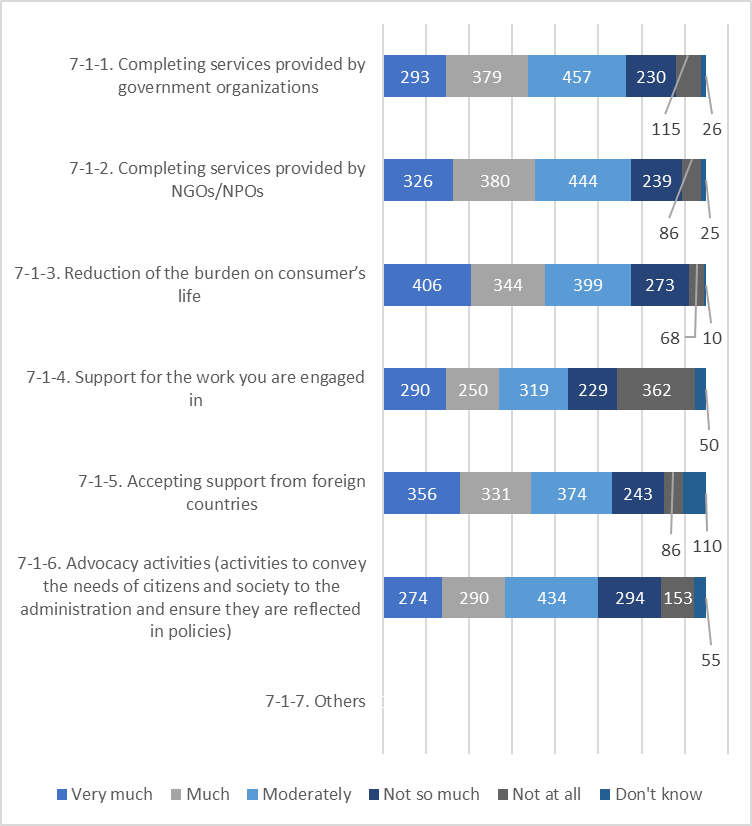
-
-
- 7-1-7. Others: One respondent answered “support in construction.”
-
7-2. Please select three organizations whose activities you evaluate from the following major NGOs / NPOs, if possible.
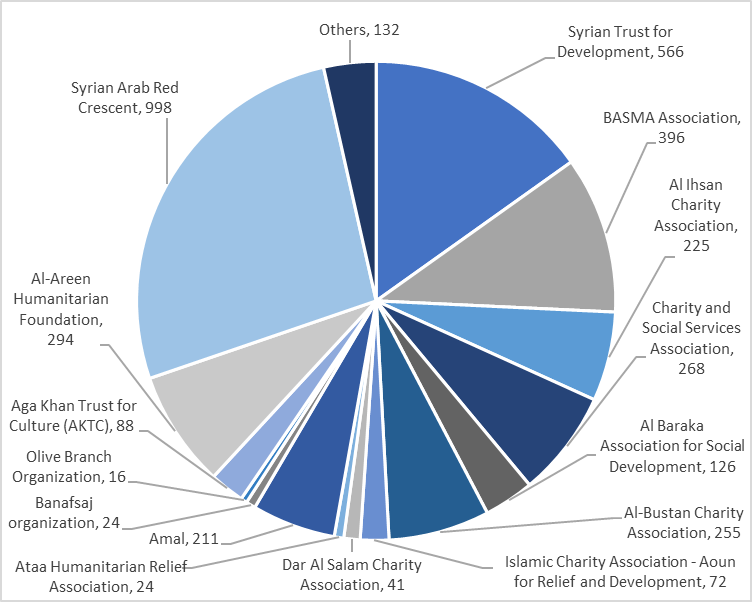
Others
| Altaalouf Association | 12 |
| Greek Orthodox Church | 11 |
| Association Nour Al-Mustaqbal | 11 |
| Jesuits | 8 |
| St. Ephrem Patriarchal Development Committee | 8 |
| Church of the Sacred Hearts | 8 |
| The General Charity Association in Saydnaya | 6 |
| Syria Al Yamama Charity Association (SYCA) | 6 |
| Al-Ihsan Charity and Development Association in Aleppo | 4 |
| Nour Foundation for Relief and Development | 4 |
| Al-Bashair Charity Association | 4 |
| UNRWA | 3 |
| Ecumenism | 3 |
| GOAL | 3 |
| Ahl al-Sham Initiative Foundation | 3 |
| Syrian Family Planning Association (SFPA) | 3 |
| Big Heart Foundation | 3 |
| Al-Amani Society | 2 |
| Patriarch of Antioch | 2 |
| Karem Charity Association | 2 |
| Al Wafa Syrian Development Association | 2 |
| Al-Mawaddah Charity Aassociation in Al-Hasakah | 2 |
| Basmat Amal for Charity and Development | 2 |
| Charity and Social Services Association | 2 |
| Saint Charbel Church | 2 |
| International Committee of the Red Cross | 2 |
| UNDP | 1 |
| Caritas Syria | 1 |
| Al-Kiswah Association for Culture and Charitable Development (KCCD) | 1 |
| Koba Association | 1 |
| Deir Mar Yaqoub Association | 1 |
| Bait el-Kull Community Center | 1 |
| Syrian Bayt Alsalam | 1 |
| Bank Al Dawaa | 1 |
| Nasaem Khiar Orgnization (NKO) | 1 |
| Kotwa | 1 |
| Hifz Al Nema | 1 |
| Bashaer Al-Nour | 1 |
| My Heart Is with You Association for Social Services | 1 |
| Don’t know | 1 |
7-3. Please select the reasons for evaluating the NGOs selected in the previous question from the following items.

Others
| Supporting the youth | 1 |
| Supporting the health of the citizens | 1 |
| Supporting the women and children | 1 |
| Providing job opportunities | 1 |
| Supporting the women | 1 |
| Incorporating some groups into society | 1 |
| Supporting the children | 1 |
| I have heard about them | 1 |
| Managing hospitals | 1 |
| Active widely | 1 |
| Don’t know | 3 |
8. To what extent do you expect the following foreign countries to support the activities of Syrian NGOs/NPOs?
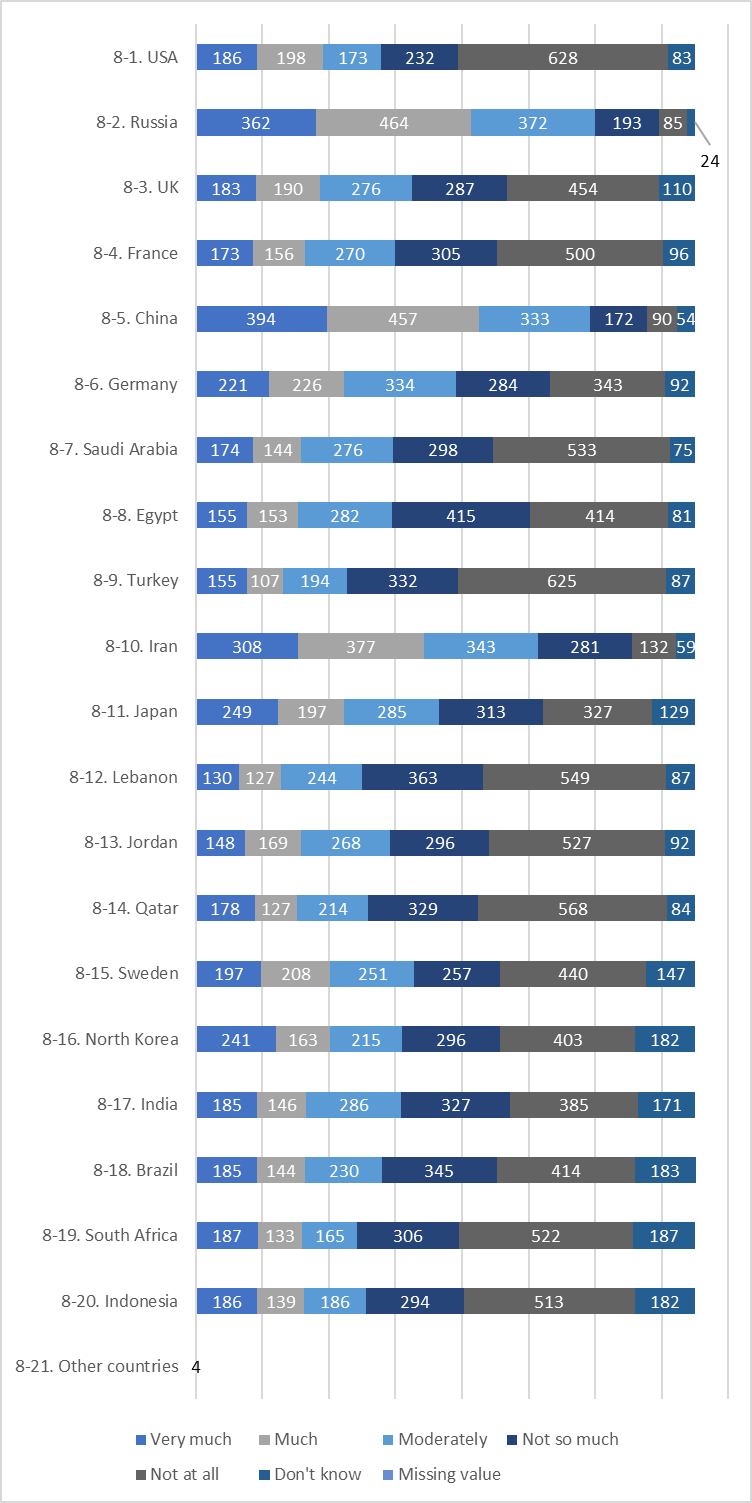
9. Which of the four phases envisioned by “the National Development Program for Post-war Syria” do you think NGOs/NPOs can contribute toward?

9-1. Please select three activities to which you think NGOs/NPOs can contribute as priority in the relief phase.

9-2. Please select three activities to which you think NGOs/NPOs can contribute as priority in the recovery phase.
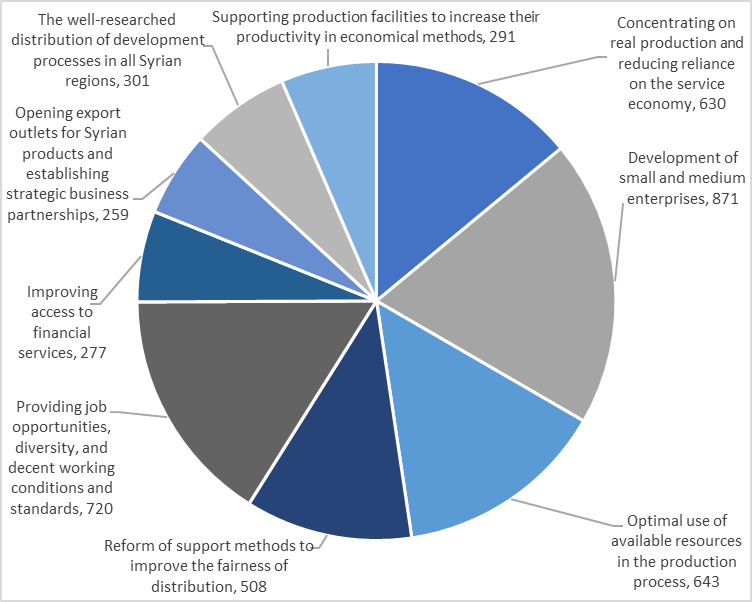
9-3. Please select three activities to which you think NGOs/NPOs can contribute as priority in the resilience phase.
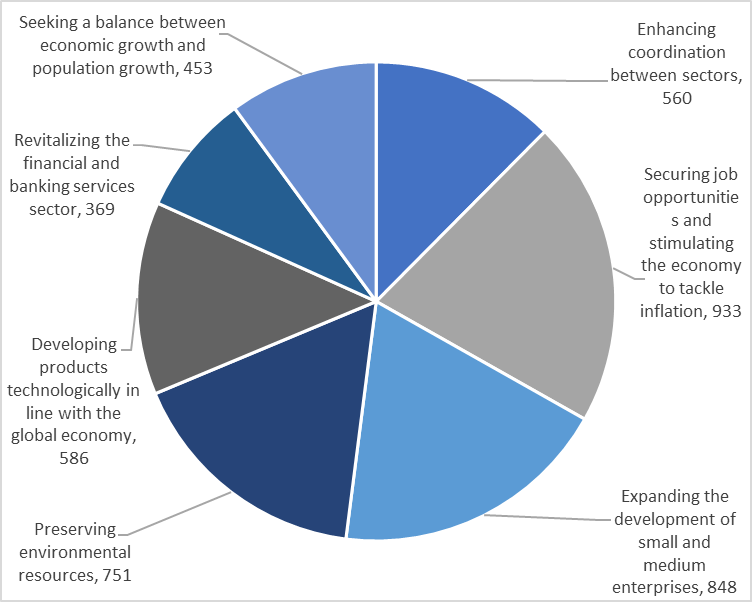
9-4. Which activities do you think NGOs/NPOs can contribute as priority in the sustainable development phase?

10. Please select three axes to which you think NGOs/NPOs can contribute.

10-1. Please select three topics to which you think NGOs/NPOs can contribute with regard to administrative reform and the eradication of corruption.

10-2. Please select three topics to which you think NGOs/NPOs can contribute with regard to developing and modernizing infrastructure and services.
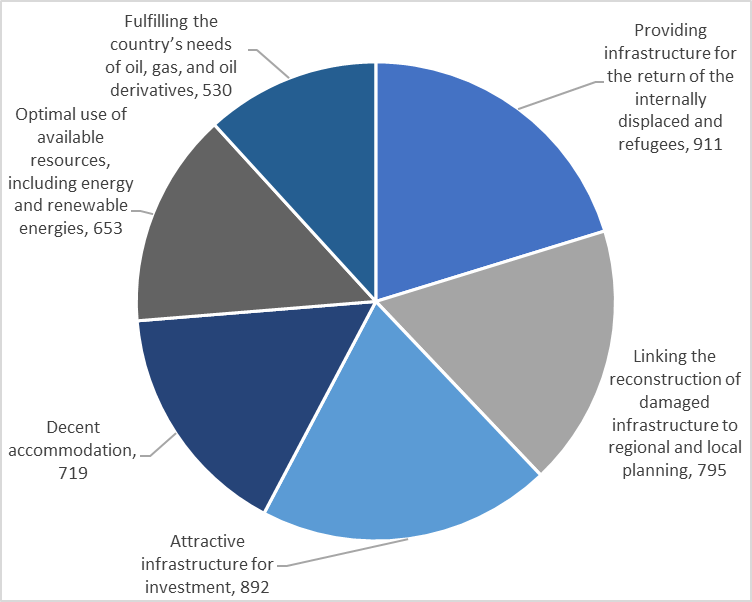
10-3. Please select three topics to which you think NGOs/NPOs can contribute with regard to growth and development.
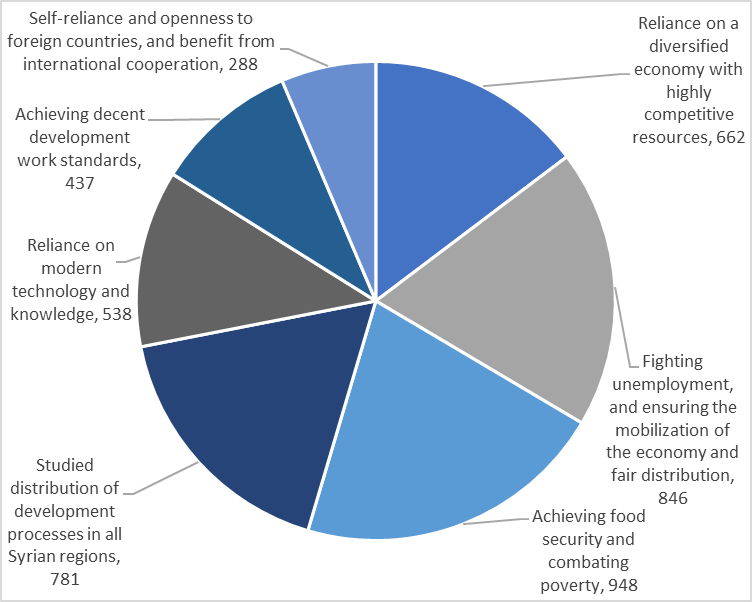
10-4. Please select three topics to which you think NGOs/NPOs can contribute with regard to community and human development.
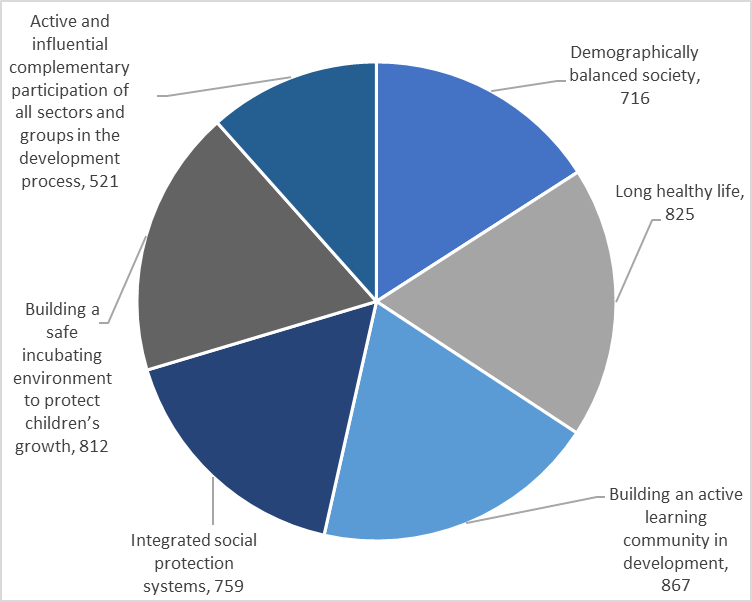
10-5. Please select three topics to which you think NGOs/NPOs can contribute with regard to national dialogue and political pluralism.
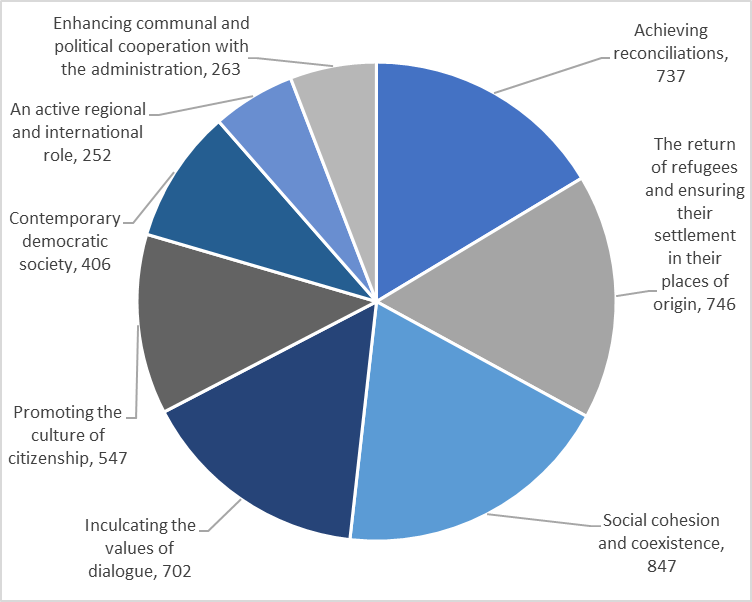
11. Please select three topics from the following that should be prioritized in the framework of the contribution of the NGOs/NPOs.
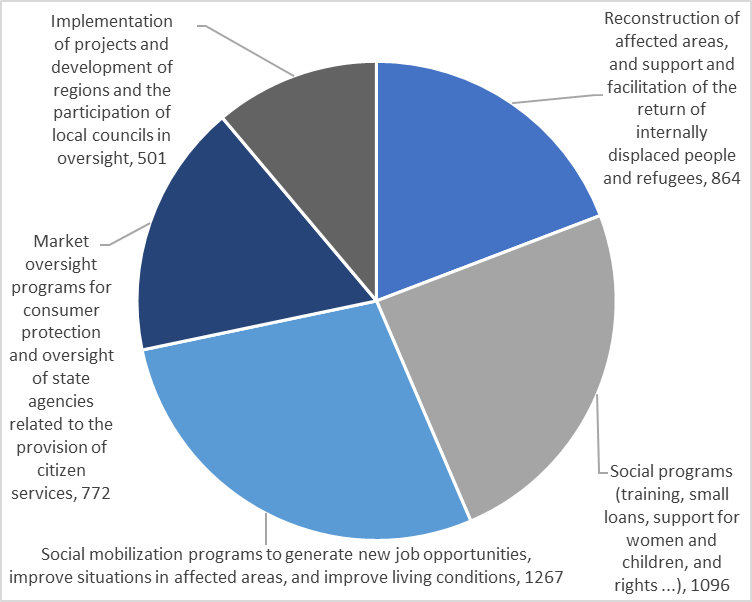
Personal Data
1. Sex
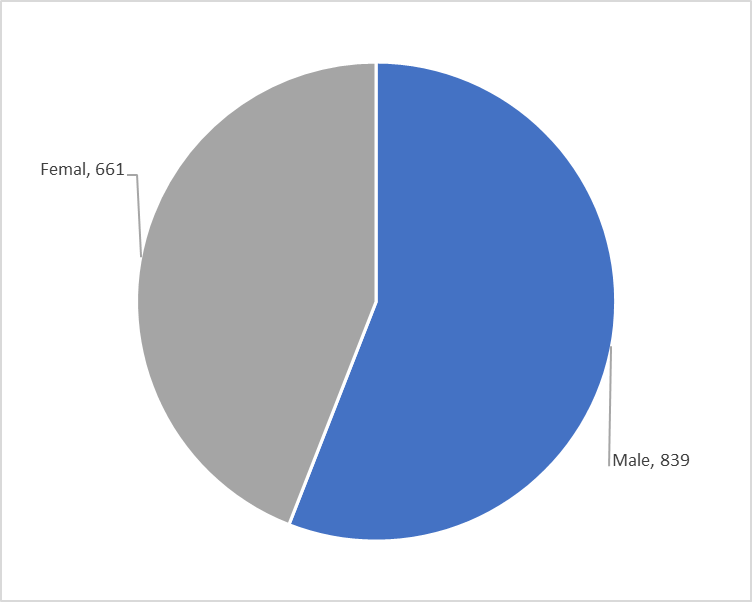
2. Birth year

| 1953 | 11 |
| 1954 | 6 |
| 1955 | 14 |
| 1956 | 11 |
| 1957 | 8 |
| 1958 | 10 |
| 1959 | 12 |
| 1960 | 26 |
| 1961 | 7 |
| 1962 | 14 |
| 1963 | 14 |
| 1964 | 15 |
| 1965 | 35 |
| 1966 | 23 |
| 1967 | 19 |
| 1968 | 29 |
| 1969 | 29 |
| 1970 | 53 |
| 1971 | 22 |
| 1972 | 31 |
| 1973 | 35 |
| 1974 | 34 |
| 1975 | 37 |
| 1976 | 35 |
| 1977 | 31 |
| 1978 | 40 |
| 1979 | 37 |
| 1980 | 55 |
| 1981 | 44 |
| 1982 | 30 |
| 1983 | 38 |
| 1984 | 35 |
| 1985 | 35 |
| 1986 | 40 |
| 1987 | 31 |
| 1988 | 26 |
| 1989 | 38 |
| 1990 | 46 |
| 1991 | 24 |
| 1992 | 23 |
| 1993 | 24 |
| 1994 | 28 |
| 1995 | 29 |
| 1996 | 30 |
| 1997 | 43 |
| 1998 | 26 |
| 1999 | 38 |
| 2000 | 58 |
| 2001 | 39 |
| 2002 | 35 |
| 2003 | 25 |
| 2004 | 22 |
3. Current address

4. Since when do you live at your current address?
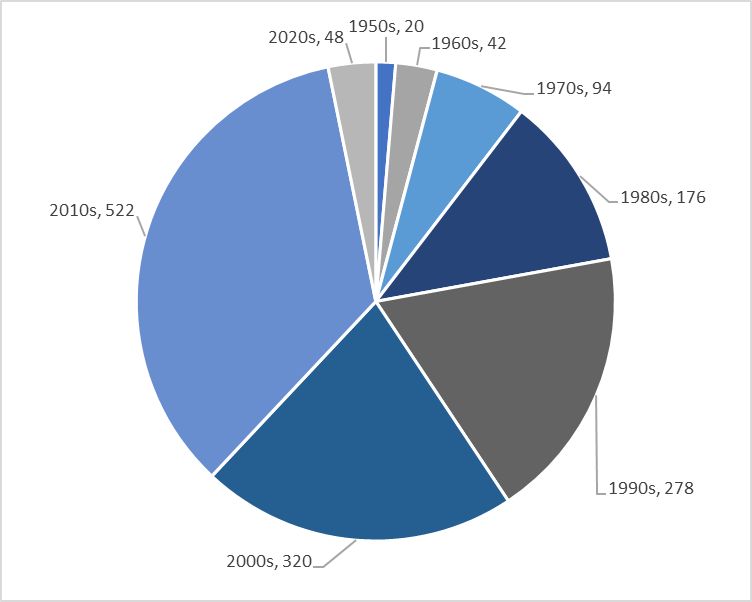
| 1953 | 3 |
| 1954 | 2 |
| 1955 | 5 |
| 1956 | 3 |
| 1957 | 3 |
| 1958 | 4 |
| 1960 | 5 |
| 1961 | 1 |
| 1962 | 2 |
| 1963 | 3 |
| 1964 | 3 |
| 1965 | 4 |
| 1966 | 4 |
| 1967 | 5 |
| 1968 | 8 |
| 1969 | 7 |
| 1970 | 19 |
| 1971 | 5 |
| 1972 | 6 |
| 1973 | 9 |
| 1974 | 10 |
| 1975 | 9 |
| 1976 | 9 |
| 1977 | 4 |
| 1978 | 11 |
| 1979 | 12 |
| 1980 | 29 |
| 1981 | 12 |
| 1982 | 13 |
| 1983 | 18 |
| 1984 | 12 |
| 1985 | 17 |
| 1986 | 23 |
| 1987 | 13 |
| 1988 | 17 |
| 1989 | 22 |
| 1990 | 54 |
| 1991 | 16 |
| 1992 | 17 |
| 1993 | 14 |
| 1994 | 14 |
| 1995 | 41 |
| 1996 | 17 |
| 1997 | 34 |
| 1998 | 27 |
| 1999 | 44 |
| 2000 | 100 |
| 2001 | 32 |
| 2002 | 41 |
| 2003 | 31 |
| 2004 | 24 |
| 2005 | 22 |
| 2006 | 17 |
| 2007 | 12 |
| 2008 | 24 |
| 2009 | 17 |
| 2010 | 35 |
| 2011 | 31 |
| 2012 | 65 |
| 2013 | 65 |
| 2014 | 60 |
| 2015 | 83 |
| 2016 | 41 |
| 2017 | 37 |
| 2018 | 58 |
| 2019 | 47 |
| 2020 | 29 |
| 2021 | 12 |
| 2022 | 7 |
5. Where is your birthplace?

6. How many people does your household have?
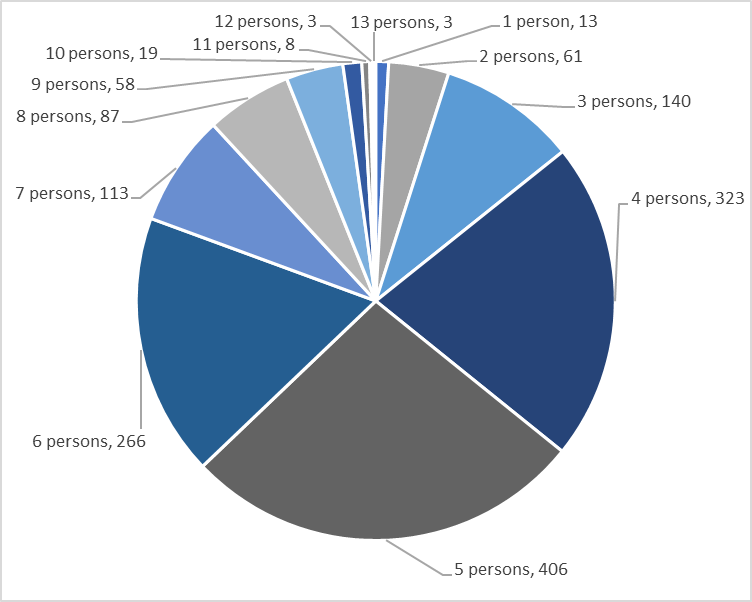
7. What is your relationship with the head of your household?
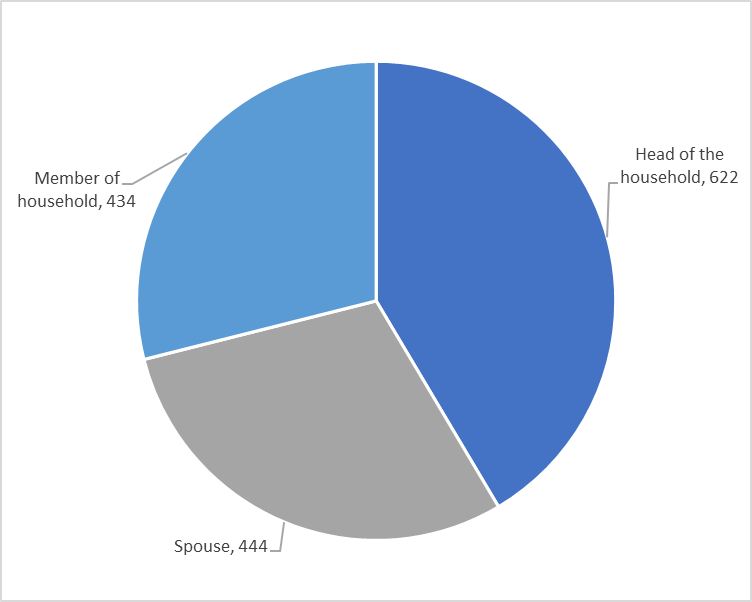
8. What is your current marital status?
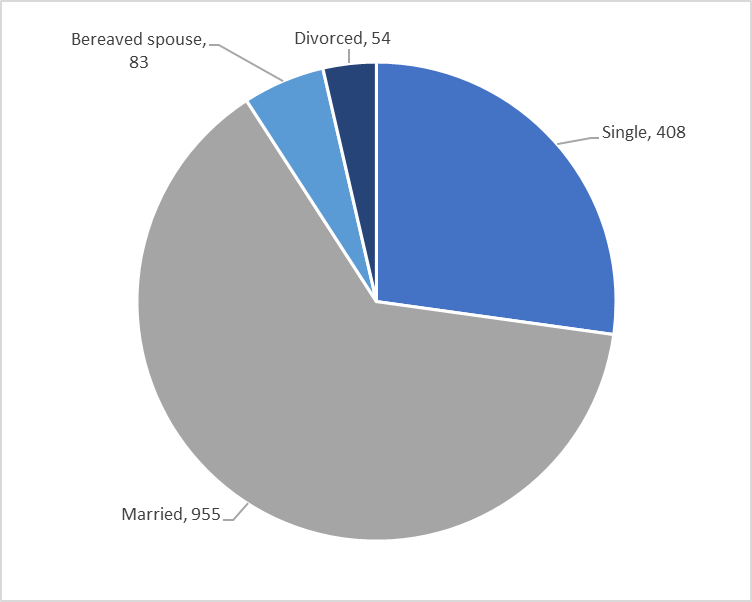
9. How do you describe your religion?

10. To what extent do you sympathize with the following principles/ideologies?

11-1. What is your native language?
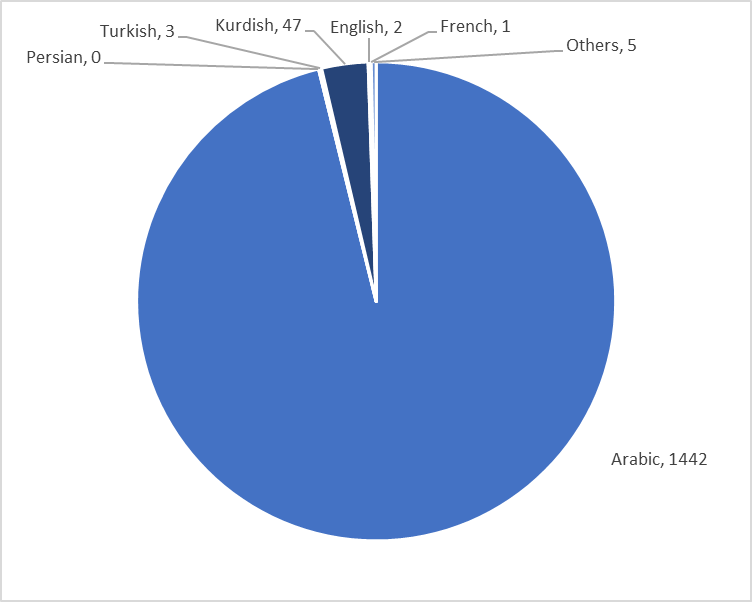
Others
| Armenian | 4 |
| Circassian | 1 |
11-2. To what extent do you understand and know (read and write) other languages than your native language?
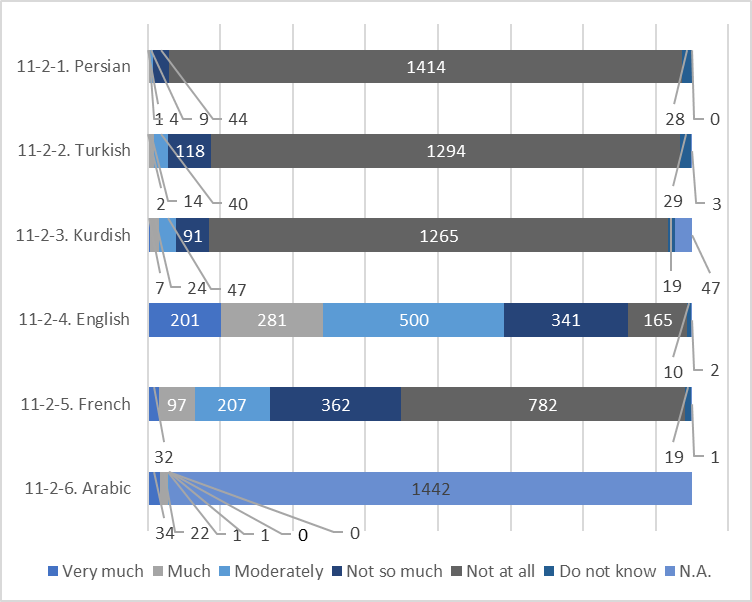
12. What is your highest education level?
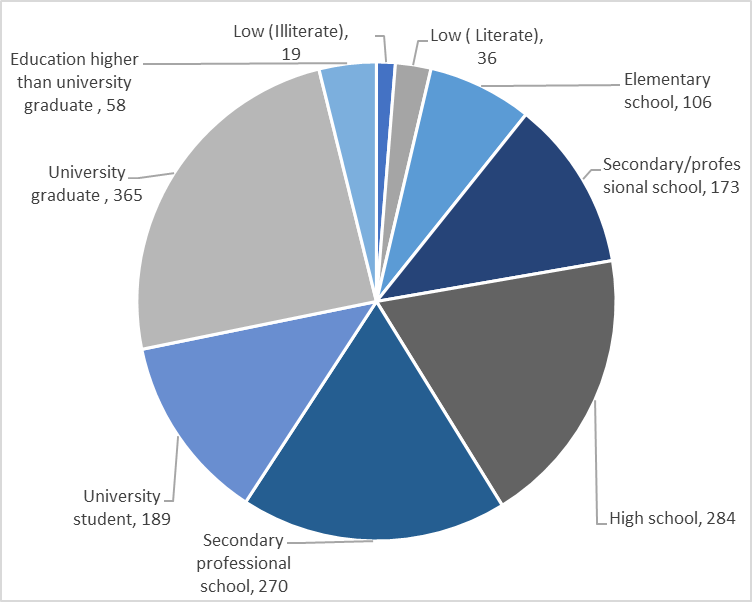
13. What is your dependency status in your household?

14-1. Please answer about your current occupation (If you are engaged in multiple occupations, please answer about your most important occupation). What is the type of occupation?

14-2. What is the sector?
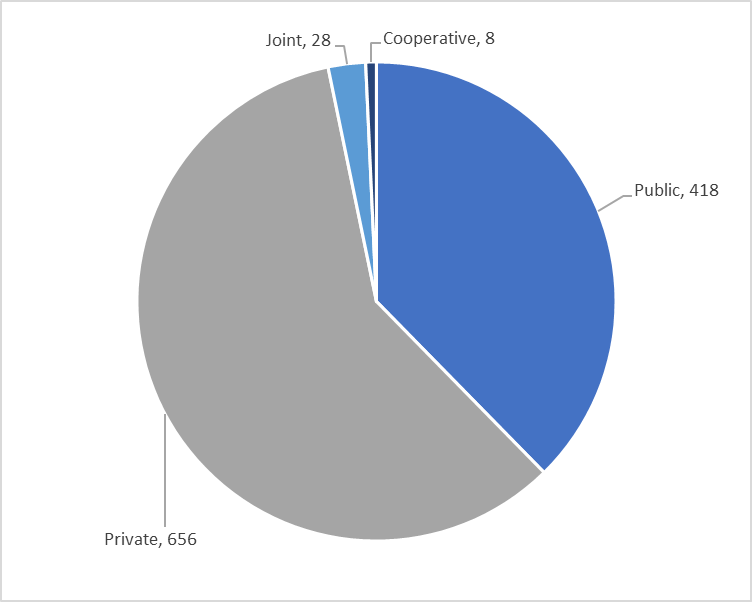
14-3. What is the type of employment?

14-4. What is the industry?
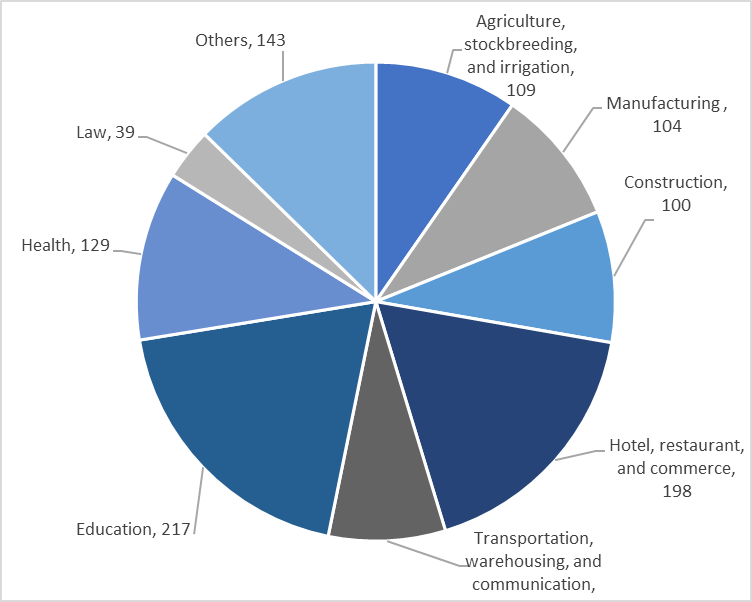
14-5-1. The following is the classification of your monthly income. To which group do you belong?
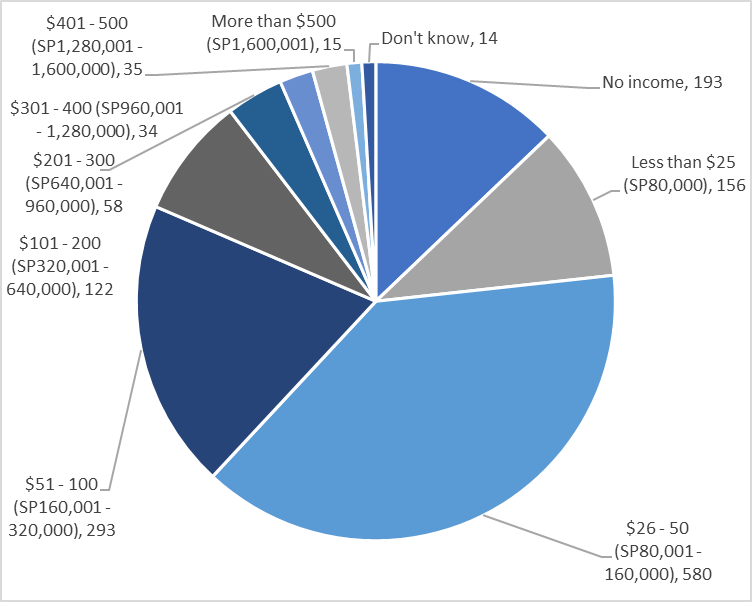
14-5-2. Do you receive monthly income from multiple sources?

